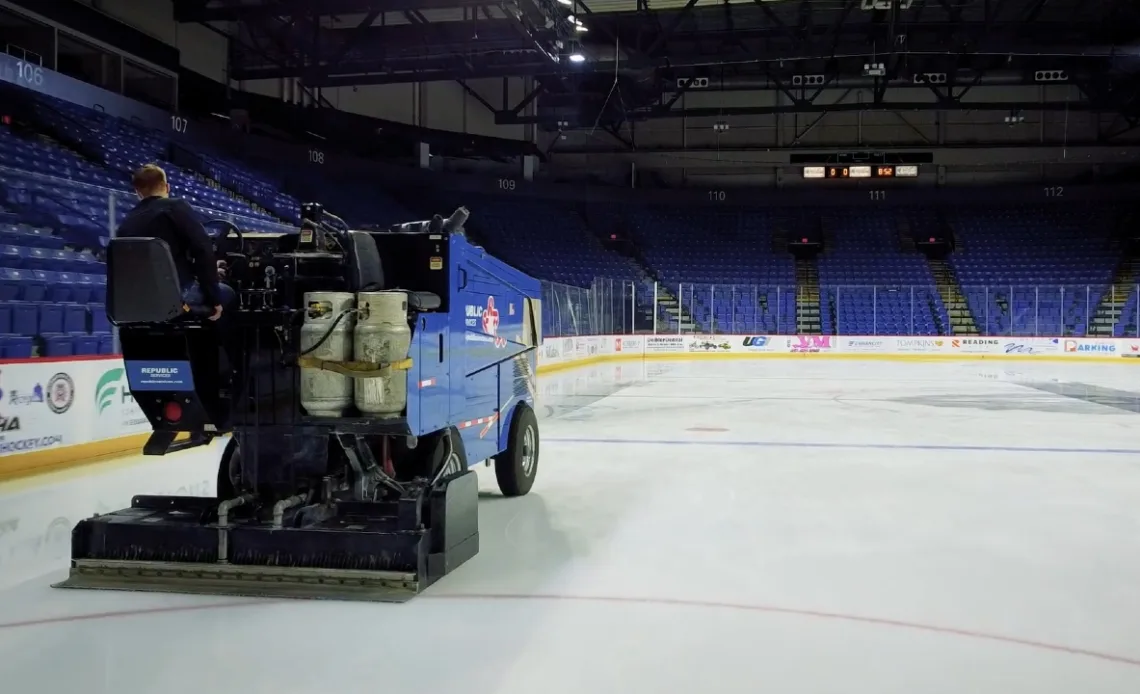The Santander Arena – an ice rink and multi-purpose venue in Reading, Pennsylvania – has seen its energy consumption reduced by 55% after replacing its R22-based refrigeration system with a transcritical CO2 (R744) system, according to a case study from CIMCO, the project’s contractor.
The new 668kW (190TR)-capacity system, which has been operational since August 2022, includes a gas cooler from German manufacturer Güntner and heat recovery technology. Recovered heat is used for underfloor heating and snow melt to further improve the efficiency of the system.
The packaged transcritical CO2 system’s enhanced energy efficiency, combined with the significantly reduced GWP of its refrigerant, will reduce the ice arena’s greenhouse gas emissions by a projected 60%.
The switch from an evaporative condenser to an adiabatic gas cooler has also cut the arena’s water consumption by 55%.
“The adiabatic gas cooler only requires water during peak conditions: approximately 10% of the year,” explained Jascha Heynck, Güntner’s Vice President of Sales. “The remainder of the year you’re able to operate dry.”
Due to the system’s high level of energy and water efficiency, and subsequent emissions reductions, the Santander Arena qualified for and received a local utility incentive payment of $81,000 (€74,597).
The 8,000-seat venue is home to the Reading Royals, an affiliate of the National Hockey League (NHL)’s Philadelphia Flyers and is managed by ASM Global.
Lower lifecycle costs
The arena has used its original R22 refrigeration system since it opened in 2001. However, due to decreasing performance and the global phase out of HCFCs under the Montreal Protocol, it became clear that the facility needed to upgrade its refrigeration system to a more sustainable option, explained CIMCO in its project case study.
In scoping out a replacement system, the arena’s management company specified that it must have high energy efficiency, low water consumption, low maintenance costs and a 30-year life cycle.
“CO2 proved to be the ideal choice, offering future-proof sustainability with its negligible GWP and alignment with the arena’s 30-year life cycle objective,” said CIMCO. “The system design and refrigerant properties require less water usage and maintenance. Combined with its proven energy efficiency and enhanced performance, CO2 emerged as the clear frontrunner for the…
Click Here to Read the Full Original Article at "ice hockey" – Google News…

